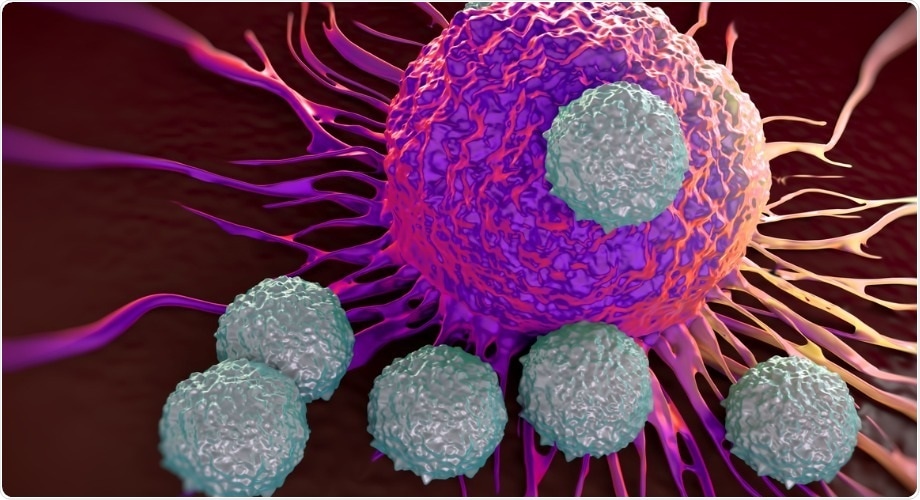A molecule recently discovered by scientists from The Scripps Research Institute can trigger a natural immune-boosting protein, known as STING (short for STimulator of INterferon Genes).

Image Credit: Scripps Research Institute.
This latest discovery represents a major advancement in the area of oncology, because the STING protein is recognized for its robust antitumor characteristics.
The STING protein marshals the immune system against both cancerous and viral invaders and, since it supports antitumor immunity, it has also attracted a great deal of interest from drug developers.
But within the body, natural activators of the STING protein are unstable DNA-associated molecules that never last long in the bloodstream. This fact has impeded the development of new therapies based on these molecules, prompting a search for a STING-activating small molecule that is tougher, can circulate in the bloodstream, and operate against tumors “systemically,” wherever they may occur in the body.
The team from The Scripps Research Institute screened a group of tiny and suitable molecules that have different structures, and effectively detected many such molecules that stimulate the STING protein. The researchers have reported the study results in the Science journal on August 20th, 2020.
The team then modified one of these molecules to improve its characteristics and observed that when this molecule is systemically injected into mice, it considerably decreased the growth of an aggressive type of melanoma.
The finding increases the prospect of a circulating medication that could stimulate the STING protein and inhibit a broad range of cancers.
A systemic STING-activating molecule could have considerable utility, and not only as a therapeutic for cancer and infectious disease, but also as a probe for studying STING-dependent antitumor immunity and a host of other STING-related biological processes.”
Luke Lairson, PhD, Study Co-Senior Author and Associate Professor, Department of Chemistry, Scripps Research Institute
Lairson and collaborators observed that their improved STING-activator, which they dubbed SR-717, seems to stimulate the STING protein in the same manner as its natural activators found in the body.
Then, using X-ray crystallography to capture the atomic-scale-interaction, the researchers demonstrated that the SR-717 STING-activator and a familiar natural activator attach to the same location on the STING protein and cause the same shape-change in this protein.
The SR-717 natural activator significantly inhibited tumor growth in an animal model of aggressive melanoma. It also promoted the presentation of tumor molecules to the immune system, inhibited metastasis, and strongly increased the concentrations around tumors of NK cells and CD8+ T cells—both of which are recognized to be the heaviest antitumor arsenals among the immune system.
At this level of effective dose, the team did not find any signs of major adverse side effects on the animals.
Lairson and collaborators are continuing to examine the SR-717 STING-activator, with the aim of developing it into a novel anticancer treatment that could be utilized either alone or along with other kinds of treatments.
Source:
Journal reference:
Chin, E. N., et al. (2020) Antitumor activity of a systemic STING-activating non-nucleotide cGAMP mimetic. Science. doi.org/10.1126/science.abb4255.